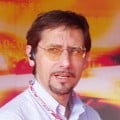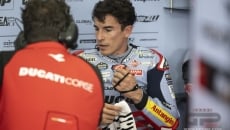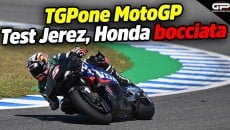There are two questions that everyone is asking today: the first, obviously, concerns Marc Marquez's competitiveness with the Ducati. The second, unquestionably, is whether and how long it will take Honda to get back to being competitive in MotoGP.
Because there is no doubt that it will come back as strong as and more than before. Its history says it all. To date, the largest motorcycle manufacturer in the world is at the top of the list of winning manufacturers, with 313 Grand Prix victories, the latest this year in Austin with Alex Rins.
2022 was its annus horribilis with zero successes and behind it, at 245, some way behind, is Yamaha.
It should be noted that Honda, after racing until 1967, only reappeared in the premier class in 1979, at Silverstone, with the futuristic NR project, the only four-stroke (with oval pistons, double connecting rods and 8 valves per cylinder) in the acclaimed era of two-stroke engines.
It wasn't a success, all fans know the story and the humiliation of that debut with Takazumi Katayama and Mick Grant leaving after not qualifying thanks to the acquisition of the last two places from two private riders. A Grand Prix that ended shortly after the start but which was the first spark of a fire that led Honda to return definitively in 1982, after having even hired the world champion of the category, our very own Marco Lucchinelli, again placing him alongside Katayama and rising star Freddie Spencer.
That year Fast Freddie won two Grands Prix, the first at the very difficult Spa-Francorchamps circuit , Katayama doubled his lead at Anderstorp and Spencer confirmed his success at Mugello.
Honda thus ended the season with 3rd, 7th and 8th place overall.
The following year, you will all remember how it ended. In a championship of 12 Grands Prix, Spencer won six, the decisive victory in Anderstorp, Sweden, ahead of Kenny Roberts in the sprint finish. It was the challenge of the century, but also the consecration of HRC's creativity which, after investing in its 500 four-stroke NR, won the title with the NS500, a three-cylinder two-stroke that beat the competition equipped with four-cylinder engines.
That year there were eight Hondas on the track because the official NS500 was joined by the RS dedicated to private riders. And we remember that the future world champion Wayne Gardner made his debut with an RS that year, in Assen, in a race made famous by the accident with Franco Uncini.
The following year there were as many as 12 Hondas on the track and with the first world championship won by Eddie Lawson, they ranked from 2nd to fifth place overall, repeating the constructors' world championship already won the previous year.
1985 was another decisive season for the Japanese colossus, which repeated its success in 500s with Spencer also taking home the 250cc title. The last rider to win two titles in the same year.
In that season there were 16 Hondas on the track, with the remaining riders on Yamaha and Suzuki.
In short, those who were worried, like our Carlo Pernat, about the possibility that Honda would withdraw from racing competition can rest assured. Honda will remain in the world championship and will come back stronger than before.









